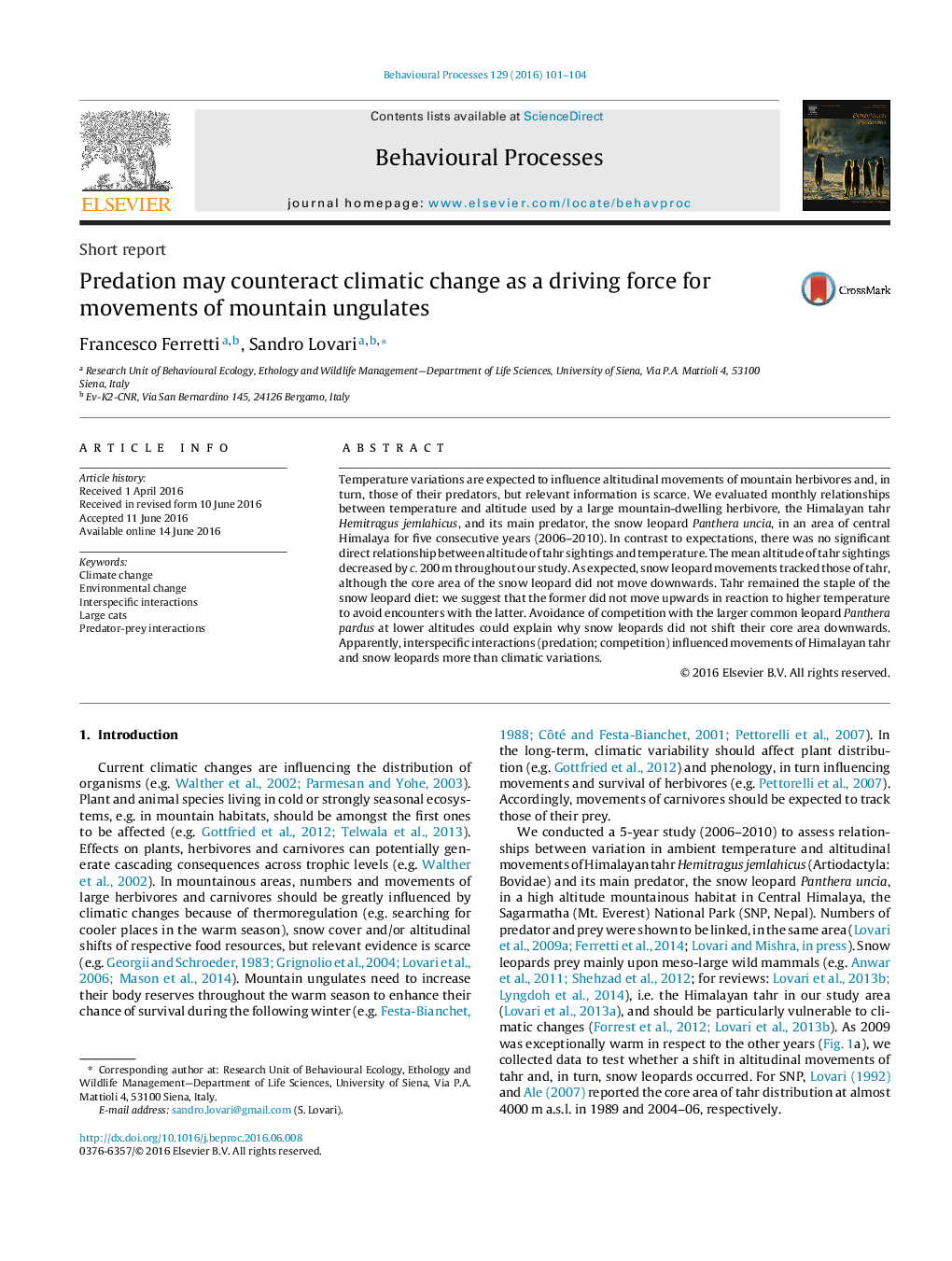| Article ID | Journal | Published Year | Pages | File Type |
|---|---|---|---|---|
| 8497068 | Behavioural Processes | 2016 | 4 Pages |
Abstract
Temperature variations are expected to influence altitudinal movements of mountain herbivores and, in turn, those of their predators, but relevant information is scarce. We evaluated monthly relationships between temperature and altitude used by a large mountain-dwelling herbivore, the Himalayan tahr Hemitragus jemlahicus, and its main predator, the snow leopard Panthera uncia, in an area of central Himalaya for five consecutive years (2006-2010). In contrast to expectations, there was no significant direct relationship between altitude of tahr sightings and temperature. The mean altitude of tahr sightings decreased by c. 200Â m throughout our study. As expected, snow leopard movements tracked those of tahr, although the core area of the snow leopard did not move downwards. Tahr remained the staple of the snow leopard diet: we suggest that the former did not move upwards in reaction to higher temperature to avoid encounters with the latter. Avoidance of competition with the larger common leopard Panthera pardus at lower altitudes could explain why snow leopards did not shift their core area downwards. Apparently, interspecific interactions (predation; competition) influenced movements of Himalayan tahr and snow leopards more than climatic variations.
Related Topics
Life Sciences
Agricultural and Biological Sciences
Animal Science and Zoology
Authors
Francesco Ferretti, Sandro Lovari,
